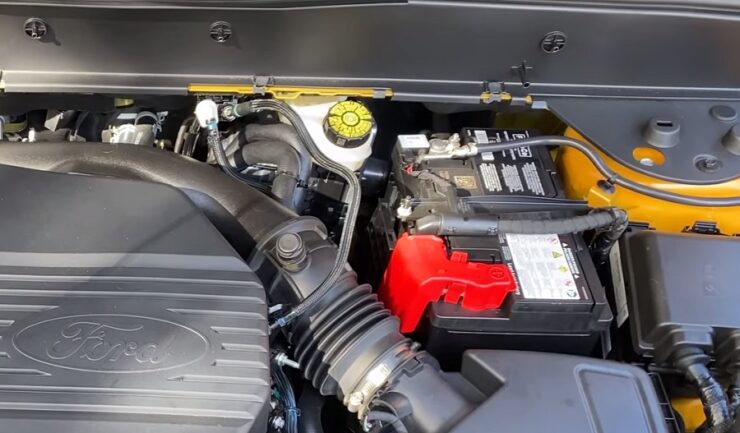When it comes to vehicles like the Ford Bronco, the small things can make a big difference. Small issues with a car over time can compound to cause its owners huge issues. A vehicle’s lifespan can be increased and maintained on the road indefinitely by doing various minor maintenance tasks and repairs here and there.
1. Maintain A Clean Exterior

On a regular basis, wash the car’s exterior. The car’s exterior is thoroughly cleaned after washing, removing all sand, salt, and other debris that could damage the clear coat finish. Waxing your Ford Bronco at least twice a year is a fantastic suggestion to keep in mind. To assist guard against the intense summer heat, do this in the spring.
To serve as a barrier in the winter against the salt applied on the roads when it snows. If the car is covered in mud and salt, it is always a good idea to clean the underbody. Rust can occur because mud retains water. Salt accomplishes the same thing but more quickly.
2. Service It Regularly
The item on the list that seems to be the most obvious is also the one that is frequently disregarded. Modern vehicles like Ford Bronco are quite capable of driving over their recommended repair intervals without you even realizing it, but the truth is that by doing so, you’re doing more harm to your engine than good.
Always follow the prescribed service intervals, though if you want to keep the car for a while, it’s okay to execute them a few hundred miles early or more regularly. In addition to lasting longer, a car that has been adequately maintained will also use less gas, perform better, and retain its value. If there’s any problem with your car parts, replace them with original Ford Bronco parts. Find here the best place to get parts for your car.
3. Take Care of Your Battery

The battery in your Ford Bronco acts as the brains of the machine. The battery is necessary for the operation of almost every component in your car. You understand how crucial batteries are if you’ve ever had a dead one. You need to take care of your batteries if you don’t want to lose power steering, fail to start your car, or experience a breakdown while driving. Another component of your car with a shelf life is the battery. You should entirely replace your battery every two to five years. If unsure, you can examine your car’s battery with a normal voltmeter or specialized equipment.
4. Change The Windshield Blades
Most vehicles still have their original windscreen wiper blades when they are scrapped. People refuse to replace windscreen wiper blades on cars no matter how worn, shredded, ragged, or naked they get or even admit that there is a problem. People will continue to drive while their windscreen is being scraped and screeched by ragged wiper blades.
This is not recommended since it can cause the wiper blades to break or harm the windscreen, which would require expensive repairs. People should change their wiper blades as soon as they begin to fray in order to protect the windscreen. Furthermore, doing this affordable repair yourself only takes a few minutes.
5. Park It Indoors

Parking a car indoors is an excellent idea year-round, despite how obvious and deceptively simple it may appear. It is advised to always park in a garage. It shields a car’s body from the weather while protecting the engine from sudden temperature changes. This is applicable to both hot summer nights and icy winter nights.
Always park inside to keep a car dry, warm, and cool in the winter and cool and sheltered in the summer. When the car is started, the engine will be put under less strain, and the time it takes for the engine to warm up will be shortened.
A car is also shielded from the elements when parked indoors, including snow, ice, rain, hail, intense sunlight, and animals that might crawl on it and scratch the paint. Indoor parking is a smart idea, no matter how you look at it.
6. Keep An Eye on the Engine
Get the engine checked as soon as you notice anything off about it. If your car makes a loud screeching or ticking noise when you start it, there may be a serious issue that, if ignored, will only grow worse. The engine should be checked if an engine indicator lights up. Consider having the light corrected so that it won’t distract you if the engine isn’t having an issue. Your car’s engine needs to be clean, especially the cylinders, as it functions as the heart of the machine.
7. Reduce Your Driving

Because your aging car has less wear and tear, cutting your weekly drivetrain by a few miles will result in lower gas and maintenance costs. Consider ways to drive less by walking, biking, carpooling, or public transportation.
Even while you still need to drive your car to keep the fluids flowing occasionally and the parts from rusting, try to take shorter journeys if you can. Even a few days a week of carpooling can extend the life of your vehicle. You don’t have to stop having fun, but try to concentrate on cutting back on your pleasure rides.
Conclusion
These suggestions are useful for any car, but they are especially useful if you already have a reliable car like a Ford Bronco. For instance, a poorly manufactured junker will always be a beater. Regular maintenance will help you keep it going for a while, but it probably won’t last that long. If you want a car that will serve you for many years, try to invest in a respectable new or gently used vehicle.
Additionally, it’s crucial to get any repairs done as soon as possible. Maintaining a repair fund is meaningless if you put off replacing your powertrain or brakes for months. The greatest approach to keeping your car in good shape is to be proactive about maintaining it. Regular inspections to look for damage or things that require fixing; anything else is merely a suggestion. Like almost everything else, cars merely require a little tender TLC

